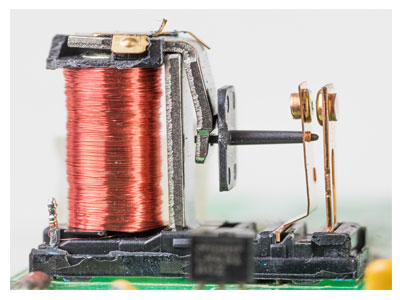Key Takeaway
Relays are essential in managing electrical circuits with a low-power signal or when multiple circuits need to be controlled by a single signal. Commonly found in both everyday and industrial settings, relays are used in automotive systems to operate headlights, in home automation for controlling lighting and heating systems, and in telecommunications to manage signal routing. Their ability to safely and efficiently control high-power applications with minimal input makes them invaluable in various applications where precise control is crucial.
Automotive Engineering Applications
Relays are integral to the automotive industry, controlling various critical functions within vehicles. They manage operations from basic lighting systems to more complex engine management tasks. Efficient and reliable, relays ensure that power is safely distributed to necessary components, enhancing both vehicle performance and safety. Their role in modern automobiles is indispensable, handling everything from activating airbags to controlling power windows and mirrors, demonstrating their versatility and importance in automotive design.

Industrial Automation and Control
In the vast world of industrial automation, relays stand as pivotal elements that enhance both control and operational safety. These devices manage the precise operations of motors, crucial production machinery, and dynamic assembly lines. Employing relays ensures that these complex systems operate smoothly and consistently, which is crucial in environments that demand both high accuracy and reliability.
The robust nature of relays allows them to handle high voltages and currents, making them indispensable in applications that require powerful performance under challenging conditions. By enabling precise control over industrial equipment, relays help maintain the rhythm of production lines and ensure that operational standards are met without compromise.
Telecommunications Systems
Telecommunications systems are the lifelines of modern communication, and relays play a critical role in maintaining this vital connectivity. They are essential for efficiently switching and routing signals across expansive networks. Within network routers and telephone exchanges, relays work silently yet effectively to ensure that every call and data packet reaches its destination without interference. This seamless transfer of information is fundamental to the integrity and efficiency of communication networks. In an industry where even a minor disruption can lead to significant consequences, the reliability provided by relays is invaluable. They ensure that, regardless of the load or complexity of the network, communication remains uninterrupted and efficient, demonstrating their critical role in our connected world.
These narratives not only outline the functionalities and importance of relays in these industries but also highlight their indispensable roles in driving modern technology forward. For engineers, particularly those just starting their careers, understanding the operational and strategic applications of relays is crucial for designing systems that are both efficient and robust.
Electrical Power Distribution
Relays are indispensable in the world of electrical power distribution. Tasked with controlling the immense flow of electricity through power grids, these devices are pivotal in protecting the intricate network of power lines and substations. Their rapid response to electrical faults—such as overloads or short circuits—enables them to isolate and manage areas of concern swiftly, thereby preventing potential damage to the infrastructure and ensuring a stable electricity supply.
This swift action minimizes downtime, which is crucial in maintaining uninterrupted service to millions of consumers. Relays, therefore, not only safeguard the physical components of power systems but also guarantee the reliability of power distribution, ensuring that homes, businesses, and essential services receive consistent power without interruptions.
Specialized Medical Equipment
In the sensitive environment of healthcare, the reliability of medical devices can be a matter of life and death, and relays play a critical role in ensuring these devices operate safely. Found in equipment as diverse as MRI machines and surgical instruments, relays manage power distribution meticulously, ensuring that these devices function within safe operational thresholds. The precision of relays in medical equipment is vital—they help in regulating power supply, preventing surges, and ensuring that the delicate electronics within these machines perform optimally. This not only aids in providing accurate diagnostic and therapeutic capabilities but also ensures patient safety and the reliability of medical procedures. Relays’ role in medical technology is a testament to their critical importance in applications where precision and reliability are paramount.
Conclusion
Relays are more than just components; they are foundational elements that enhance safety, efficiency, and functionality across multiple sectors. From powering cars and factories to enabling communication and safeguarding critical medical procedures, relays prove their worth by performing under pressure and meeting the demands of a wide range of applications. For engineers, especially those new to the field, understanding the diverse applications of relays is crucial for innovating and improving systems in virtually any industrial landscape.
